Photos of Samurai: The Last Century of Japanese Warriors
The hilt of a tachi
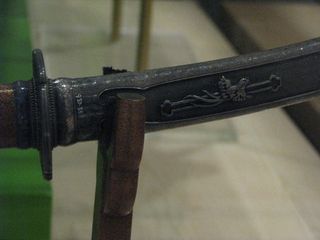
A Samurai training text dating to 1844 has been deciphered; the text served as a primer for students learning the martial art of Takenouchi-ryū. The text reads: "When [knowledge] is mature, the mind forgets about the hand, the hand forgets about the sword," a status requiring a calm mind and one few students could hope to achieve. This picture shows the hilt of a tachi (slung sword), dating to 1861, which would have been used by a high-ranking young Samurai. The sword with mounting is now in the Royal Ontario Museum in Toronto, Canada.
The mounting for the tachi
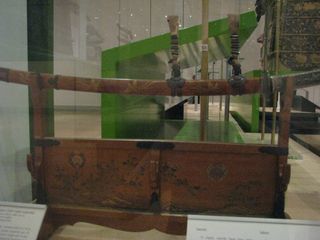
The mounting for the tachi sword is made of lacquered wood and contains gold decoration and silver fittings. It would have been made for a samurai who was relatively wealthy and high ranking. By 1861 many samurai were struggling to survive on a meager fixed income and had to seek loans to survive.
Samurai armor
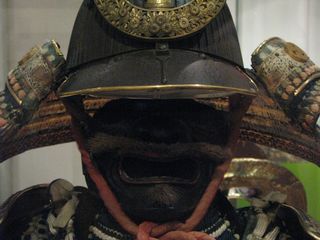
This 19th-century Samurai armor contains a mempo, a face mask that, in addition to being decorative, would potentially have had a strong psychological effect on any would-be opponent. This suit of armor is in the Royal Ontario Museum in Toronto, Canada.
Hand-made armor
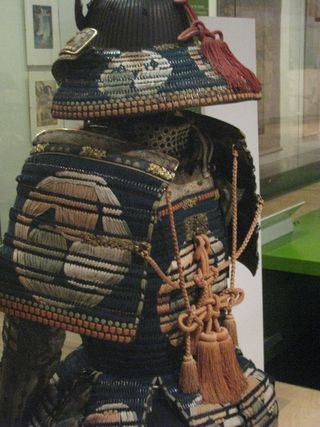
Royal Ontario Museum researchers say that the 19th-century Samurai armor is made of lacquered iron, silk lacing, doeskin and engraved gilt copper. The decorations are colorful and carefully made.
Significant protection
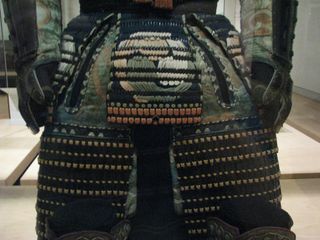
In the 19th-century, Samurai armor still offered full protection down to the gloves, pelvis, legs and boots. This is remarkable considering that gunpowder weapons had been available in Japan for more than two centuries.
Full armor
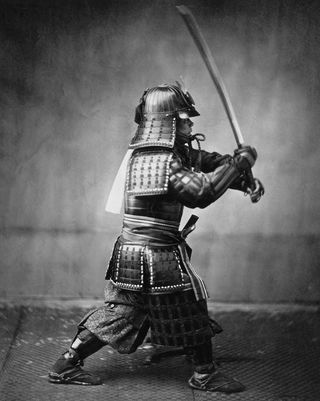
A photograph taken around 1860 showing a Samurai in full armor with sword. Within two decades of this photo being taken the Samurai would effectively be abolished and Japan would move to a conscript army that would largely consist of peasants.
Creative design
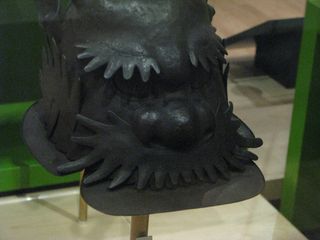
In the 19th century the helmets the Samurai worn were, at times, created in very creative ways. This helmet, which Royal Ontario Museum researchers say is a product of the Myochin School, is made of iron and depicts the face of an ogre.
Sign up for the Live Science daily newsletter now
Get the world’s most fascinating discoveries delivered straight to your inbox.
Decorative headpiece
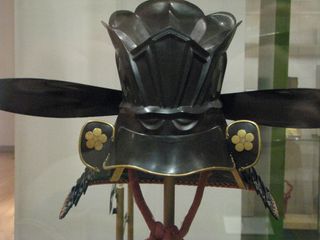
This helmet was made around 1790 and is made of lacquered iron and wood, silk lacing and gilt copper fittings according to Royal Ontario Museum researchers. An elaborate and decorative piece created at a time when the samurai had relatively few conflicts to fight.
Weapons of choice
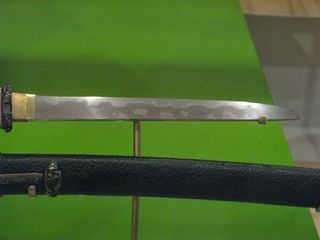
While only Samurai could use long swords Royal Ontario Museum researchers notes that merchants were allowed to carry daggers and short swords which could be decorated lavishly. This Aikuchi-type tanto (dagger) may have been worn by a merchant.
Practical yet beautiful
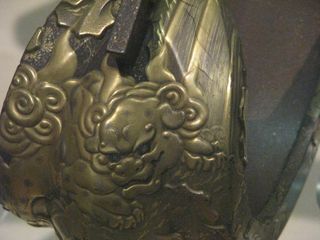
This stirrup would have been used by a samurai mounting a horse, helping him stay mounted. Royal Ontario Museum researchers say that this example was made in 1852 and was decorated with gold maki-e decoration.
Ancient weapons
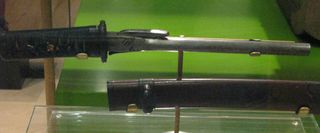
By the 19th century gunpowder weapons had been in use in Japan for over two centuries, its users included the samurai. This percussion lock pistol dates to the mid-19th century and is now in Toronto’s Royal Ontario Museum.

Owen Jarus is a regular contributor to Live Science who writes about archaeology and humans' past. He has also written for The Independent (UK), The Canadian Press (CP) and The Associated Press (AP), among others. Owen has a bachelor of arts degree from the University of Toronto and a journalism degree from Ryerson University.










